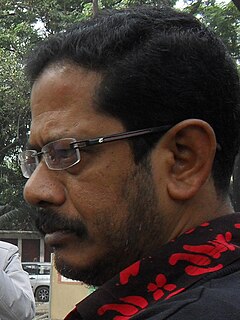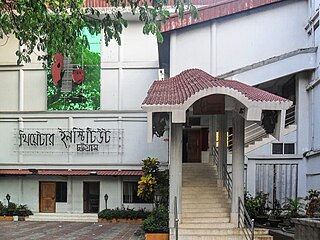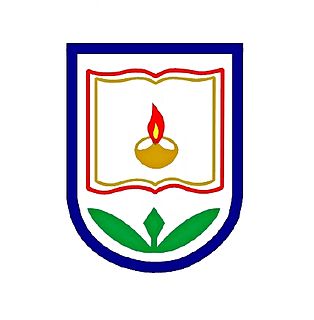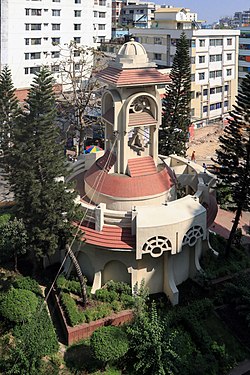
Chittagong, officially Chattogram, is the second-largest city in Bangladesh. It is the administrative seat of the eponymous division and district. It hosts the busiest seaport on the Bay of Bengal. The city is located on the banks of the Karnaphuli River between the Chittagong Hill Tracts and the Bay of Bengal. The Greater Chittagong Area had a population of more than 8.7 million in 2017. In 2021, the city proper had a population of more than 5.1 million.

Poila/Pohela Boishakh is the first day of the Bengali calendar which is also the official calendar of Bangladesh. This festival is celebrated on 14 April in Bangladesh and 14/15 April in the Indian states of West Bengal, Tripura, and Assam by Bengalis regardless of religious faith.

Vaisakha is a month of the Hindu calendar that corresponds to April/May in the Gregorian Calendar. In Indian national calendar, Vaisakha is the second month of the year. It is the first month of the Vikram Samvat calendar, Odia calendar, Punjabi calendar, Assamese calendar and the Bengali calendar. This month lies between the second half of April and the first half of May.

The Marma, formerly known as Moghs or Maghs, are the second-largest ethnic community in Bangladesh's Chittagong Hill Tracts, primarily residing in the Bandarban, Khagrachari and Rangamati Hill Districts. Some Marmas live in Bangladesh's coastal districts of Cox's Bazar and Patuakhali, while others live in Tripura, India and Myanmar. There are over 210,000 Marmas living in Bangladesh. Since the 16th century, the Marma have considered the Bengal's Chittagong Hill Tracts their home, where they have established the Bohmong and Mong Circles (chiefdoms).
The Culture of Bangladesh is intertwined with the culture of the Bengal region. It has evolved over the centuries and encompasses the cultural diversity of several social groups of Bangladesh. The Bengal Renaissance of the 18th early 19th centuries, noted Bengali writers, saints, authors, scientists, researchers, thinkers, music composers, painters, film-makers have played a significant role in the development of Bengali culture. The Bengal Renaissance contained the seeds of a nascent political Indian nationalism which was the precursor in many ways to modern Indian artistic cultural expression.

Khagrachari is a district in the Chittagong Division of Southeastern Bangladesh. It is a part of the Chittagong Hill Tracts region.

Agrabad is a downtown commercial and financial area in Chittagong, the second largest city of Bangladesh. Located close to the city's harbor, it hosts numerous Bangladeshi and international businesses, banks, financial institutions, and the other commercial entities. The Chittagong Chamber of Commerce & Industry, the World Trade Center and Chittagong Stock Exchange are most prominent of them. The area forms part of the Double Mooring precinct and is directly connected to the Port of Chittagong.

Central Railway Building (CRB) is situated in the scenic hilly area of Chittagong, Bangladesh. It is the governing office for the general manager of Bangladesh Railway. The building was completed in 1872, it is one of the oldest buildings of the port city. To the east, across CRB Road, is Railway Hospital at CRB, built in 1994. There is a proposal to establish a 50-bed medical college at CRB and up-grade the existing Railway Hospital to 250 beds. There is a residential area for the railway officers surrounding it.

Shishir Bhattacharjee is a Bangladeshi artist. His paintings, critical of the political establishment but always in a satirical fashion, were first seen in the 1980s. His political cartoons appear regularly in daily newspapers in Bangladesh. During the past couple of years, he has produced paintings that appropriate images from Bengali film posters, altered to serve his social and political messages.

Old Dhaka is a term used to refer to the historic old city of Dhaka, the capital of Bangladesh. It was founded in 1608 as Jahangirabad or Jahangirnagar, the capital of Mughal Province of Bengal and named after the Mughal emperor Jahangir. It is located on the banks of the Buriganga River. It was one of the largest and most prosperous cities of South Asia and the center of the worldwide muslin trade. The then Nawab of Bengal Murshid Quli Khan shifted the capital from Dhaka to Murshidabad in the early-18th century. With the rise of Calcutta during the British rule, Dhaka began to decline and came to be known as the "City of Magnificent Ruins". The British however began to develop the modern city from the mid-19th century.

The Bengali Calendar or Bangla Calendar, colloquially, is a solar calendar used in the Bengal region of the Indian subcontinent. A revised version of the calendar is the national and official calendar in Bangladesh and an earlier version of the calendar is followed in the Indian states of West Bengal, Tripura and Assam. The New Year in the Bengali calendar is known as Pohela Boishakh.

Rajeev Gandhi is a Bangladeshi industrialist and art collector. He is currently the managing director of Golden Harvest Group, a leading Bangladeshi conglomerate, and the founder and trustee of Samdani Art Foundation which produces the Dhaka Art Summit. He is the founding committee member and co-chair of the Tate Museum, United Kingdom, South Asian Acquisition Committee. He is a member of Tate's International Council and founding members of Harvard University Lakshmi Mittal South Asia Institute's Arts Advisory Council, USA. They are also members of Alserkal Avenue Programming Committee, Dubai and advisory council members of Art Dubai.
Chittagong Government Model School and College is a government owned educational institution situated in the port city Chittagong, Bangladesh established by the Ministry of Education of the country. It is one of the eleven model educational institution established in the six divisional towns of the country.

Pohela Falgun, also known as the first day of Spring of the Bengali month Falgun, is a festival celebrated in Bangladesh. The celebration was started in 1991 by students of Dhaka University's Faculty of Fine Arts. The first of Falgun usually falls on 13 February of the Gregorian Calendar. But the Bangla calendar has been adjusted in accordance to historical dates of Bangladesh. So from 2020 Pohela Falgun is celebrating on February 14, instead of February 13 due to the changes made in the Bangla calendar. The festival in Bangladesh also celebrated as Basanta Utsab,

Theater Institute Chattagram (TIC), is a theatre and cultural convention center located in Chattogram, Bangladesh. It is a theater hall of drama, film and performing arts. The institute is organized and controlled by the City Corporation of the Chittagong district.
Dilara Begum Jolly is a Bangladeshi print artist, sculptor, installation artist, and painter. She is known for her work highlighting discrimination against women and explicitly presenting feminist perspectives in her work.

Khulna Public College or KPC, formerly known as Sundarban Boys' Public School and College, is an autonomous educational institution directly administered by the Ministry of Education in Boyra, Khulna, Bangladesh. It offers education for 3rd through 12th grade. It is an educational institution only for boys. In 2015, KPC was named The Best Digital Educational Institution of Khulna zone.
The Bangladeshi calendar is a civil calendar used in Bangladesh, alongside the Gregorian calendar and the Islamic calendar. With roots in the ancient calendars of the region, it is based on Tarikh-e-Ilahi, introduced by the Mughal Emperor Akbar on 10/11 March 1584. Amartya Sen states that only traces of Akbar's influence survive. The calendar is important for Bangladeshi agriculture, as well as festivals and traditional record keeping for revenue and taxation.

Folk music is one of the genres of music in Bangladesh. It is mainly Bengali's own music. This music talks about the lives of the people of rural Bengal, happiness, and sorrow. There are many parts to it again. It highlights the culture of a country or any region of the country.





















